Website design has come a long way. From basic, text-based web pages with minimal interactivity to the dynamic pages that we see today, the evolution of web design has been a fascinating journey. Marked by technological advances, changing design trends, and the complex demands of users globally, we’ve witnessed a drastic change in the way website experiences are crafted across industries. After all, you wouldn’t wish to fall back in today’s digitally driven world!
Stuti Mazumdar & Vidhi Tiwari - April 2024

But have you ever wondered how website development has evolved to be what it is today? Let’s dive deep into the humble beginnings of HTML to the sophisticated and immersive user experiences of the present day.
1. Where it All Started: Text-Based Websites (Early 1990s)
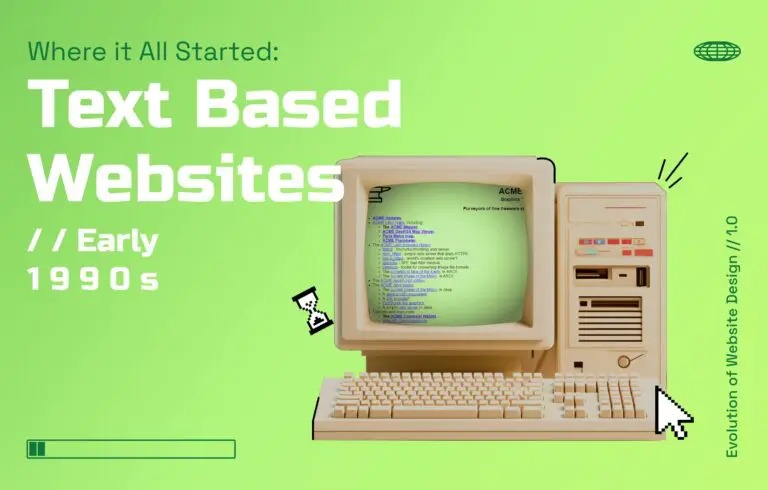
The tale begins in the late 1980s and early 1990s with the creation of Hypertext Markup Language (HTML). HTML allowed developers to structure and link documents through hypertext, laying the foundation for the World Wide Web. At this time, the World Wide Web was still in its infancy, and designers had limited tools and technologies to work with. This was, hence a well-situated event in the timeline as at this point, people relied on dial-up modems to establish internet connections. Hence, the websites had to be built for slower connection speeds.
This version of websites was simple and static and didn’t change much once they were created. The sites composed primarily of text and basic formatting. Graphic elements were limited, and interactivity was almost non-existent. Since designers had to manually code each element of the website, including text, images, and links, they stuck with plain backgrounds and basic fonts. The main focus was on delivering information rather than aesthetics.
Fun fact! In August 1991, Tim Berners Lee was the first to publish a website – a simple, text-based web page with a few links.
In the mid-to-late 1990s, the world’s most important web programming language was invented, called JavaScript. It was originally called Mocha and later, LiveScript. It was invented to facilitate automation in interactions across websites. That is, it changed a text-based, static web page into an interactive one.
2. The Rise of CSS and Introduction of Graphics (Late 1990s)
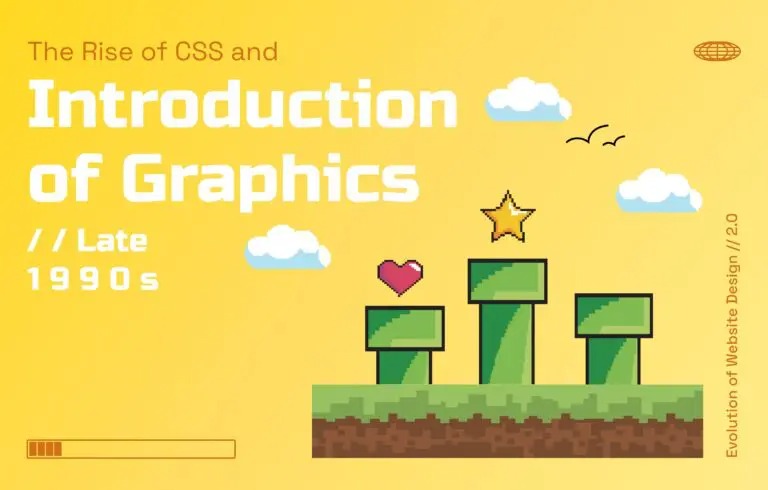
As the internet gained popularity, the need for visually appealing and flexible designs became evident. Cascading Style Sheets (CSS), thus, emerged as a game-changer, allowing web developers worldwide to distinctly separate the structure and content of a webpage from its visual style. Thanks to the introduction of CSS, websites were littered with on-site page builders and spacer GIFs.
As websites involved graphics and images, visuals became an essential part of the user experience. This marked a significant shift in website design trends. Designers began to experiment with different layouts and color schemes to make websites more visually appealing. They also started using tables to organize content and create more complex designs. This allowed for better organization of information and improved the overall user experience. Additionally, this allowed for easier maintenance, and consistency across pages, and opened the door for more creative design possibilities.
3. Introduction of Flash and Multimedia (Early 2000s)
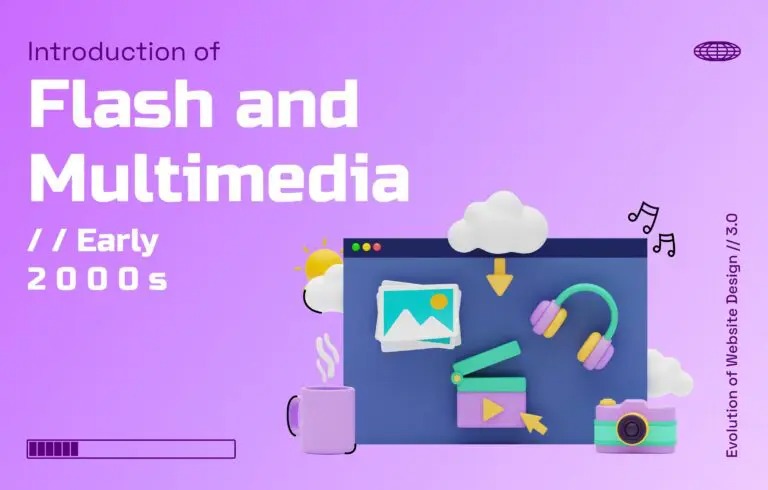
The late 1990s and early 2000s were marked by the dot-com boom, leading to a surge in the number of websites. We saw the rise of Flash, a multimedia platform that allowed designers to create interactive and animated websites. Flash enabled the integration of audio, video, and interactive elements, making websites more engaging and dynamic. Flash revolutionized website design by introducing interactive elements that were previously not possible. Websites became more immersive, with design elements, animations, games, and interactive menus. Flash also allowed for the creation of more complex user interfaces and navigation systems. However, Flash had its drawbacks, including longer loading times and compatibility issues with certain devices.
Flash paved the way for user-centered design practices. Structure and navigation became important were now important considerations to be made.
4. User-Centric Design with Web 2.0 (Early-to-mid-2000s)
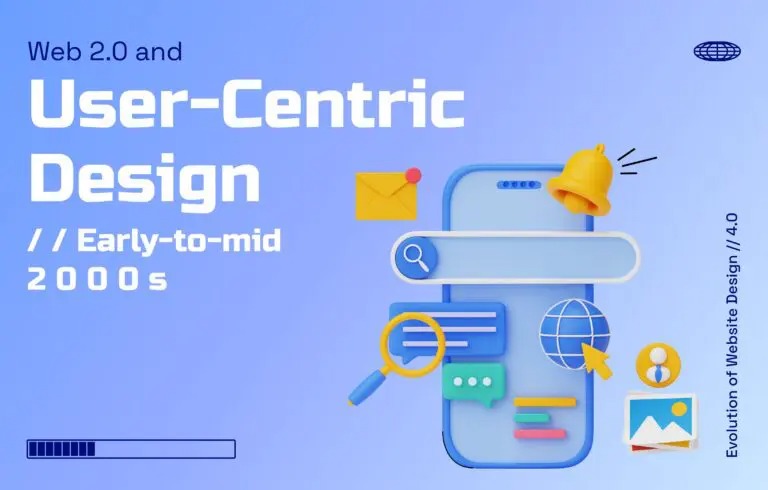
The beginning of the 2000s started with an increase in broadband speeds. According to the statistics, by 2003, over 50% of users were surfing the internet with 32-bit hardware, enabling them a more efficient and enhanced experience. Hence, significant efforts were made on new and innovative software and hardware solutions.
The mid-2000s marked the emergence of Web 2.0, a term that referred to the shift from static websites to dynamic and user-centric platforms. Websites became more interactive, with features like user-generated content, social media integration, and personalized experiences. The ideal examples were websites like Google and Facebook, as they set new standards for intuitive interfaces and paved the way for the responsive web design principles that would dominate later years. Designers focused on creating intuitive interfaces and seamless navigation to enhance the user experience. During this time, websites started incorporating more user-generated content, such as comments, reviews, and forums. Social media integration became common, allowing users to share content and connect with others. Designers also started using Asynchronous JavaScript and XML (AJAX) to create dynamic web pages that could update content without refreshing the entire page.
5. The Dawn of Self-Expression via Social Media
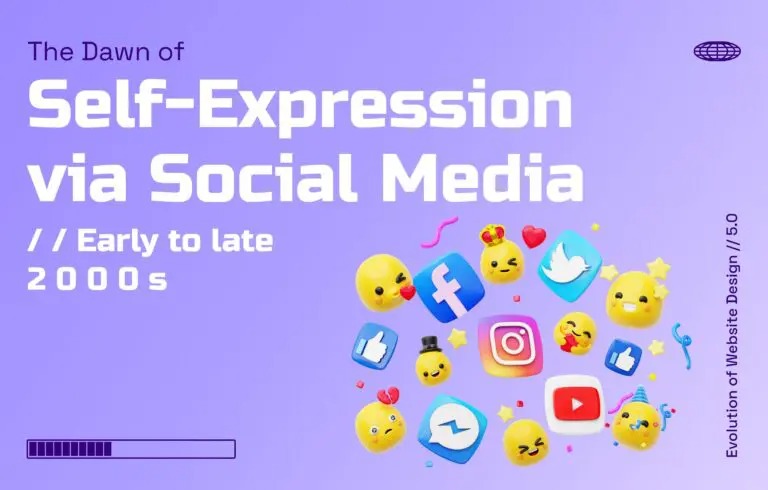
Worth mentioning are the shared experiences of 30-something millennials that shaped their young adulthood.
In 2003, WordPress was released. Created by Matt Mullenweg and Mike Little, this blogging site allowed users to create a simple, static blog post with minimal personalization. However, over the course of 2 years, WordPress introduced various plug-ins that allowed users to customize their site through themes and interactions without altering the content. WordPress, as we see it today, is one of the leading content management systems globally.
A few other celebrated platforms were MySpace and Facebook. Tom Anderson and Chris DeWolfe designed MySpace to facilitate global connections among users through their online profiles. Facebook, founded by Mark Zuckerberg, was a successful social media platform that took self-expression to the next level. And we don’t really need to tell you how.
6. The Mobile Revolution & Responsive Design Trends (Late 2000s)
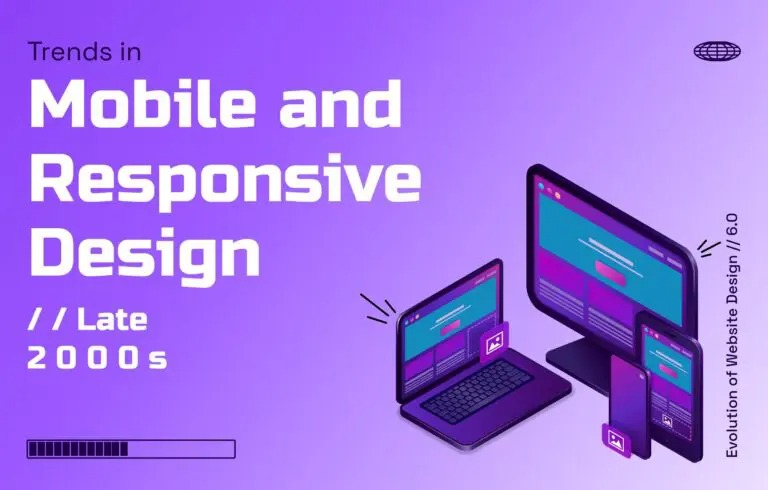
The Industrial Revolution saw the light with Web 2.0 and we witnessed the modern web. An increase in interactive content, improved designs, advent of social media were the telltale signs that we were moving toward a new era of website design.
Furthermore, the proliferation of smartphones necessitated a shift in web design paradigms. Responsive web design became crucial as designers sought to create websites that adapted seamlessly to different screen sizes and devices. This approach, nailed by Ethan Marcotte in 2010, emphasized flexible grids, fluid images, and media queries to provide a consistent user experience across desktops, tablets, and smartphones.
In particular, however, the importance of content prevailed. And with that, search engine optimization came into the big picture. With all of design centered around the users, websites were aligned with what users were looking for online.
7. Design as We Know Today (The Present)
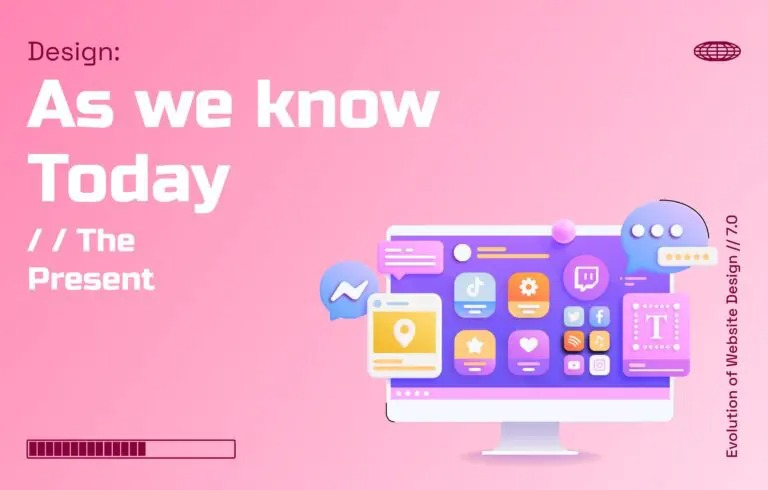
Looking back at the history of website design, we’ve come a long way! We hold the power to translate over 133 languages instantly, read global news updates in real-time, navigate through a new city, and much more. Website design has firmly taken the front wheel in driving us towards the internet that we access today.
In recent years, minimalism and flat design have gained popularity. Minimalism focuses on simplicity—clean layouts, ample white space, and minimal use of colors and graphics. Flat design, on the other hand, eliminates the use of shadows, gradients, and textures, opting for a more two-dimensional and minimalist aesthetic. These design trends prioritize clarity, readability, and ease of use. Characterized by simple typography, bold colors, and intuitive navigation, they prioritize content over visual elements, allowing users to focus on the information they need. These designs also load faster and provide a seamless user experience across different devices.
Micro-interactions and animation have become key elements in modern website design. Micro-interactions are small, subtle animations or feedback that provide users with a sense of control and engagement. They can be as simple as a button changing color when hovered over or as complex as a loading animation.
The Future of Website Design
The long history of web-based application as well as the upcoming multitude of technological advancements are bound to shape the future of website design.
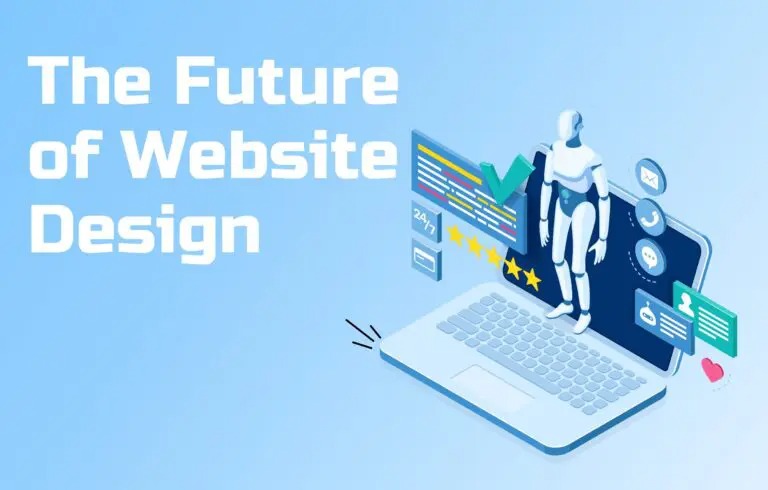
A leading contender is artificial intelligence (AI) and chatbots. AI-powered chatbots can provide personalized assistance and enhance the user experience by offering real-time support and recommendations. These intelligent systems can analyze user behavior and preferences to deliver tailored content and services. Chatbots can learn from previous user interactions and continuously improve their responses for a seamless experience. AI can also be used to personalize website content based on user preferences, location, and browsing history, creating a more personalized and engaging experience.
Artificial intelligence (AR) and Virtual Reality (VR) have already made their way into our online experiences. Gaming, eCommerce, etc. already involve the use of these technologies and that’s only the beginning.
In conclusion, website design has come a long way since its inception. From simple text-based websites to modern, interactive platforms, the evolution of website design has been driven by advancements in technology, user expectations, and the need for better user experiences.




